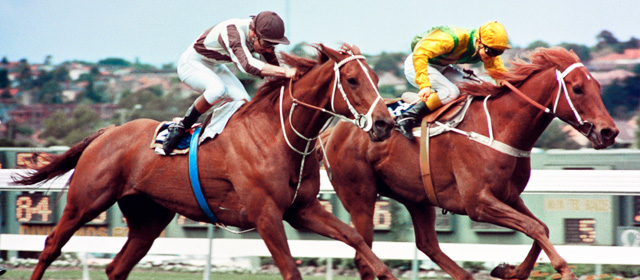Story summary
Beginnings
Horse racing is one of New Zealand’s oldest organised sports. Races were held to celebrate the arrival of European settlers in an area, and the first recorded full-scale race meeting was in Auckland in 1842. The earliest race days included various sporting events as well as sideshows and other entertainment.
At first races were contested by ordinary riding horses. Once thoroughbreds were imported, a breeding and racing industry began.
Clubs
Racing clubs were organised by local committees from the 1840s, and later by community leaders. By 1900 almost every town had its own racing club and course. Māori also took part in racing, and some set up clubs.
Betting
Betting has always been part of racing. After a public outcry over uncontrolled gambling, the government regulated betting in 1881. The Totalisator Agency Board (TAB) was set up in 1950 to provide legal off-course betting.
Growth
Racing grew rapidly in the later 19th century, and a national body to establish rules for all clubs was formed in 1897. Until 1913, the richest race was the New Zealand Cup, run in Christchurch. It was then overtaken by the Auckland Cup, reflecting the shift in population and wealth.
Breeding
New Zealand has an ideal climate and pasture for breeding horses. Nelson and Canterbury were early centres, followed by Hawke’s Bay, Auckland and Waikato. Champion thoroughbreds have included Carbine, Phar Lap, Sunline and Melody Belle.
Recent changes
Women were only granted full jockey licences in 1977, but by 2012, 40% of jockeys were women. Racing’s popularity declined in the late 20th century, but in the 2000s major race days were once again attracting large crowds.
Harness racing
In harness racing (also called trotting), horses pull sulkies (lightweight carts). Races are often held at night. Canterbury is the main centre for trotting – both racing and breeding – and is the location of the most important race, the New Zealand Trotting Cup.
Greyhound racing
Greyhound racing is a minor sport compared with horse racing. Greyhound racing evolved from coursing, where dogs chased live hares. Coursing clubs were set up in New Zealand in the late 19th century after hares became pests. From 1954 dogs chased an artificial lure instead.





